by Ken Gargett
As the otherwise largely obscure (now, or at least to me) French poet Paul Claudel said, “Gentlemen, in the little moment that remains to us between the crisis and the catastrophe we may as well drink a glass of champagne.”
It has been that sort of a week. Still trying to move to new digs (the bank insisted on seeing my birth certificate for identification despite me being a client for more than three decades and having five accounts with them – they then told me that there was a problem as the certificate did not have an expiry date. Presumably that will appear on the death certificate at some stage).
COVID-19 also looks to have ruined my annual fishing trip. Not happy. I am, of course, very aware that a great many people on the planet have far worse problems than missing a fishing trip, but I’m still not happy.
If I may take the sage advice of Sir Winston Churchill: “I could not live without champagne. In victory I deserve it, in defeat I need it.” Well, I need it. And, yes, I am aware that many attribute the quote to Napoleon but there is, I am assured, no actual evidence that Napoleon ever said any such thing.
Thank you, Winston Churchill. There are so many wonderful stories about champagne, and I was reminded of a couple when thinking of Churchill.
Apparently, and no doubt the military historians among us could provide better details than I ever might, the Allies also landed in the south of France as well as Normandy when they sought to take back Europe from the Nazis.
On one particular beach, American troops arrived expecting heavy resistance. As it happened, the beach was deserted and silent. As the Americans fortified their position, waiting for the inevitable fightback, one gentleman suddenly walked over the dunes. They looked closer to discover that in fact it was a lone man dressed as a waiter (which, apparently, he was) carrying a tray with several glasses and a bottle of champagne. Seems the Nazis had left this area some time earlier and our friend was there to welcome the Allies.
The American commander looked at the tray, the single bottle, and glasses and made a quip about the offering being a bit short of needs given the number of troops on the beach. The waiter looked at the commander and, without cracking any sort of smile, replied, “Well, you were expected some time ago and we needed something to drink while we waited.”
Another story involved the Americans and French discussing Allied troop movement up through France to relieve Paris and the best route they should take. The Americans had put a lot of work into this and made their proposal. The French generals rejected it out of hand. The Americans went away and tried again, returning with a second option. The French generals examined it and again dismissed it, insisting it was utterly unacceptable. The puzzled Americans tried yet again, coming up with a third plan. The French checked it out and advised that this one was more than acceptable. It was put into operation.
Some time later, the American generals were chatting with their French counterparts and one brought up the rejected plans. What was wrong with them, he wanted to know. The Americans had thought them ideal.
The French looked at him in horror and one explained, “But you wanted your soldiers to march through some of our finest vineyards, including Champagne. We could not agree to that.”
Champagne is a region that has always seemed to be at the crossroads of any war in Europe. My grandfather spent four years touring France back in 1914 to 1918, mostly in muddy trenches interspersed with various spells in hospitals, a great deal of it very close to the vines of Champagne.
We are fortunate that these are different times and hopefully the region, and the rest of Europe, will never experience anything like that again.
Louis Roederer NV? No: Collection 242
Almost all of the many wonderful champagnes we have published about on Quill & Pad have been what are termed prestige releases, with a sprinkling of vintage champagnes.
We have avoided the basic non-vintage releases, not because they are not any good – there are a great many extremely fine non-vintage champagnes – but simply because that has not been our focus. Today that changes, and with it we look again at one of our most regular houses, Louis Roederer.
Roederer has appeared so often for one reason only: this vineyard makes sensational champagne.
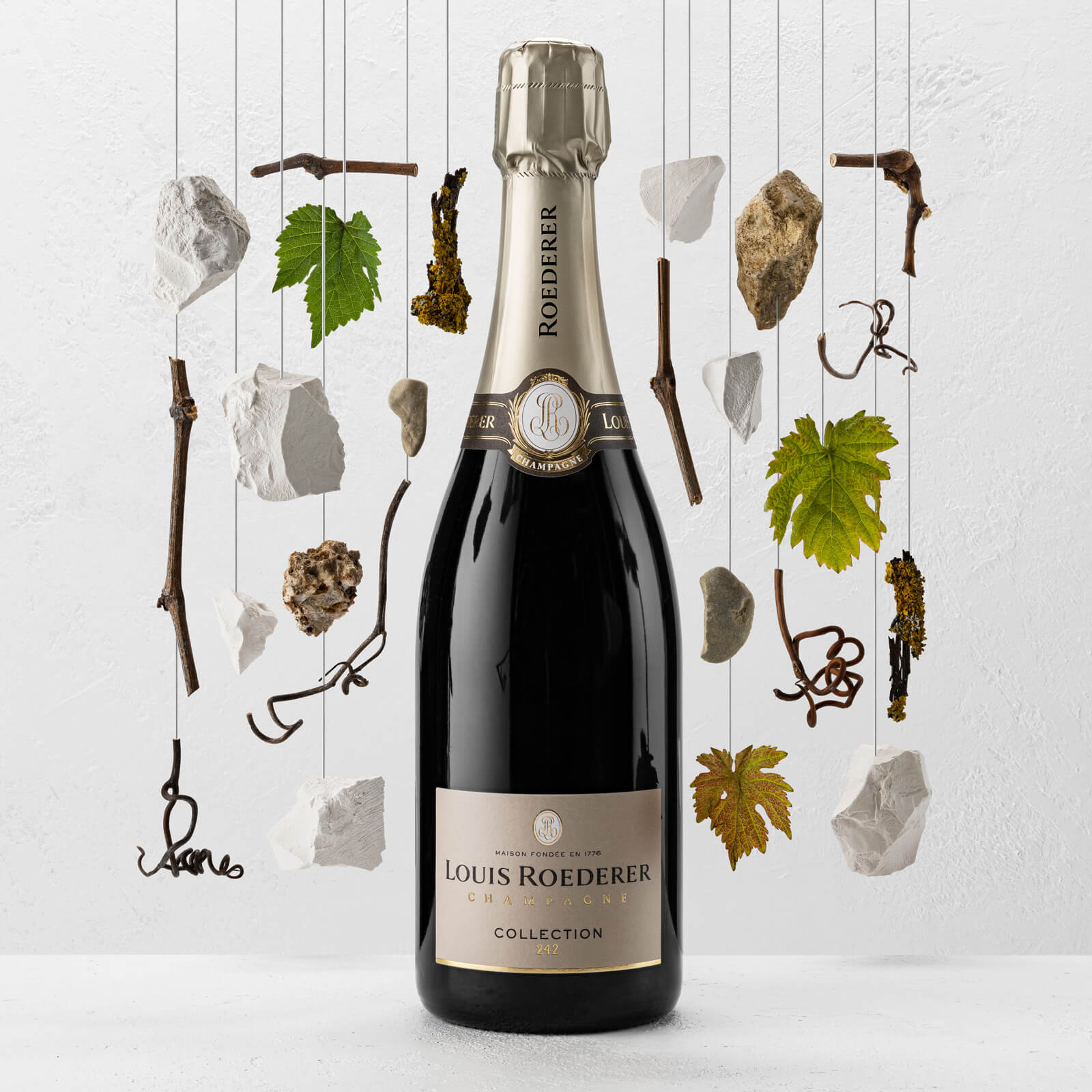
Louis Roederer Collection 242
Collection 242 is not, however, its usual NV (known as Brut Premier) as that wine is to be discontinued. When I first heard that, I thought Roederer and its supremely talented chef de cave Jean-Baptiste Lécaillon must have taken leave of their collective senses. There is, of course, method in the madness. The NV might be about to be discontinued, but it is to be replaced by a new NV dubbed Collection 242.
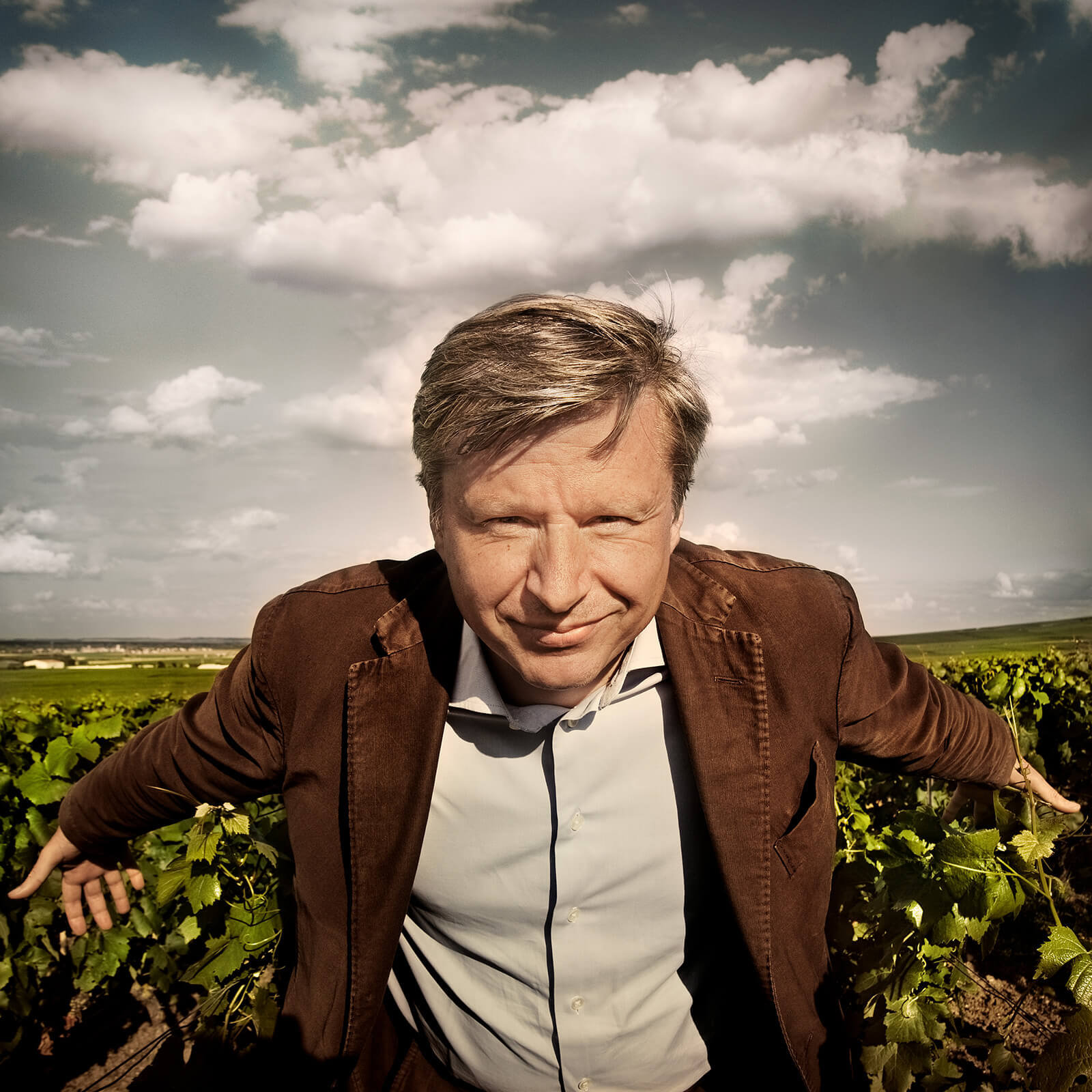
Jean-Baptiste-Lecaillon, chef de cave at Louis Roederer (photo courtesy Luc Manago)
The new wine is a touch more expensive than the old Brut Premier NV and, like houses such as Krug, is now looked at as a multi-vintage rather than a non-vintage (which is, of course, a much more accurate term). Given Brut Premier was by far the biggest selling champagne in the Roederer world, this is brave. Indeed, for almost all houses the NV/MV is the biggest selling champagne.
We’ve seen “numbering” emerge recently – there are subtle variations, although sometimes I think that is more so each house can claim to be first rather than for any more substantial reason.
Jacquesson was the first to take up the concept, beginning in 2000 with its 700 series – the first was the 728 (Jacquesson is not claiming to have been making wines back in the Middle Ages, but rather, this was its 728th blend released, which includes numerous wines other than just the NV). Krug followed in 2015 with Edition 160. Now we have Roederer.
It is not only a Champagne thing. I was recently talking with Ed Carr, the superstar winemaker from the House of Arras in Tasmania, who is about to release the 2013, which Carr believes is the wine that will see this much-loved producer really turn the corner and step up.
I mentioned how much I was looking forward to trying this wine and explained the new concept as he had not yet heard of it. His response? “They’ve copied us!” Seems that Arras is also doing this numbering program. I suspect Carr’s comment might have been a little tongue in cheek.
Will we see more houses move to systems like this? When such regional stars and world-famous wine producers as these take the plunge you can bet others will follow. Everyone will have their own variation on the approach, and no doubt some will maintain their current systems, but the genie is out of the non-vintage bottle.
The concept of non-vintage champagne is that it is always identical or supposed to be. So if I buy a bottle of NV from a house in New York, it should be identical to the one I bought in London a decade ago (obviously, aging on cork does bring in a variable, but we are talking about time of purchase).
To achieve this, to be able to blend different wines year after year to produce the same wine and be under no illusions, a chef de cave from one of the major houses will consider this one of his most essential skills; it takes years of experience. Of course, one can expect tiny variations on the theme. The use of reserve wines (older vintages kept back for the purpose) simply may not always be able to be manipulated to replicate past NVs exactly.
One reason suggested for this new trend is that it provides a means of combatting climate change. That force alone would have ensured that the non-vintages we’ve known over recent decades would never quite be the same for future releases.
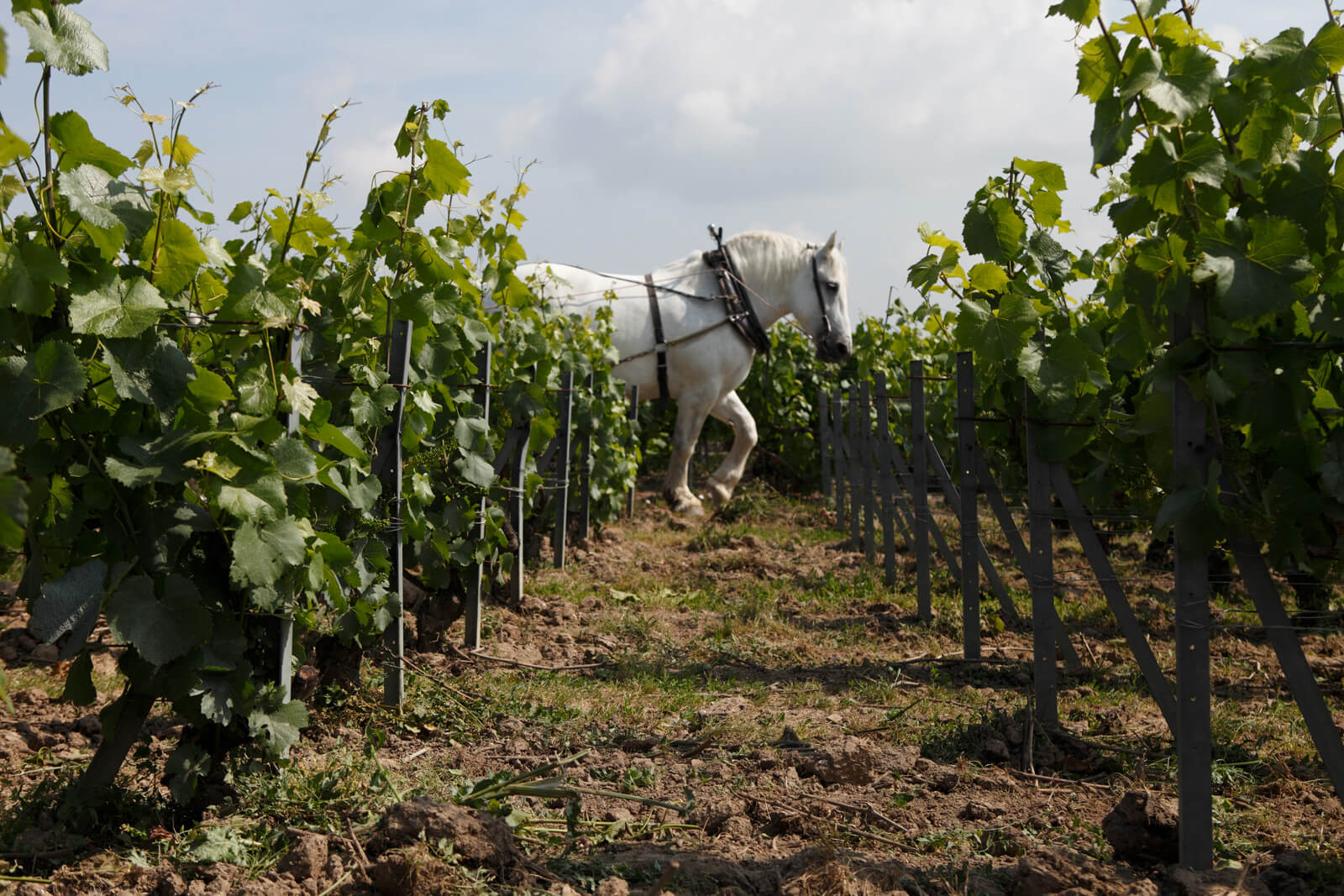
A horse biodynamically working a vineyard at Louis Roederer champagne
Houses like Jacquesson and Krug, and now Louis Roederer, recognize this and have realized that they can use their skills to continue to provide wines reflecting their DNA – the house style – while acknowledging the realities of vintage variation.
Perhaps the most exciting thing about all this for many wine lovers is that the houses are now actively providing an enormous amount of information that was previously kept secret for so many years. Champagne houses would tell us that this was all “secret squirrel” stuff and could not be revealed (one sometimes expected to see George Smiley hidden in the cellars) or worse that consumers had no interest in or understanding of such matters and the houses did not want to confuse them. They have come to the realization that the exact opposite is often true.
Sure, if you are ordering a glass of fizz for friends in a bar after work on a Friday evening, you are not going to be fussed about whether it spent three years or four on lees, but those buying for their own cellar will think differently. Also, all those wine geeks out there (of which I am proudly one) can’t get enough of that sort of info.
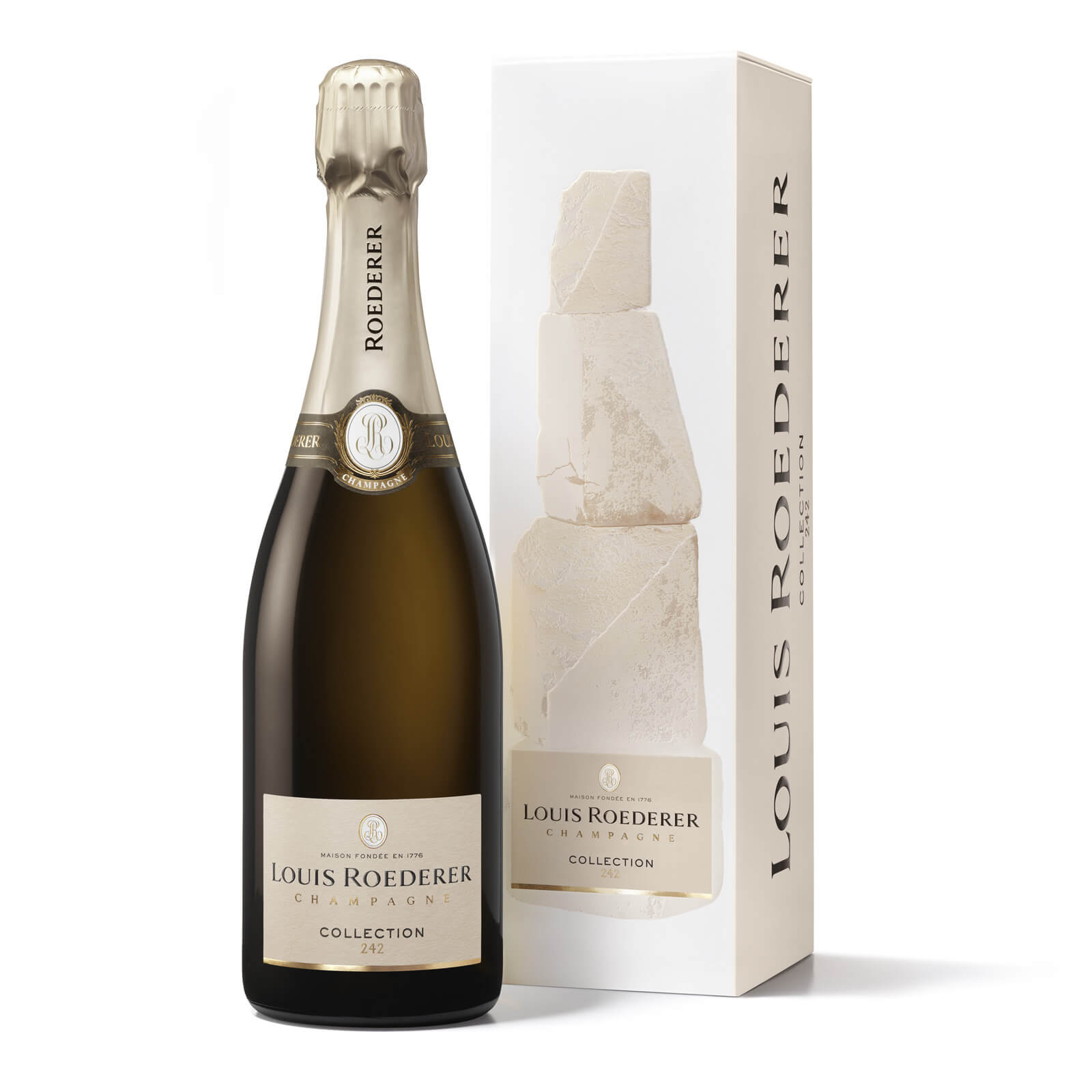
Louis Roederer Collection 242
So, for Roederer’s new Collection 242 the winemaker established what it calls a “réserve perpetuelle,” which will act as the core for the blend for years to come. And each cuvee will be numbered.
The réserve perpetuelle is a large (very large, I believe) tank that will act in a similar manner to a sherry solera. At the moment, the blend dates back to the 2012 vintage, not a bad one with which to start. Chef de cave Lécaillon has been quoted as saying this will bring consumers a champagne that is “more expressive” and that this was inspired by the “fight for freshness.”
Roederer has usually stored its reserve wines in large old oak vats (this is still happening). Lécaillon believes that using a vast tank in this way helps to protect the wine from oxidation.
Louis Roederer Collection 242
The new wine was called Collection 242 because it is based on the 2017 vintage, and that vintage was the 242nd harvest since the foundation of Louis Roederer in 1776. Future releases will obviously have different numbers. This time, 2017 is the base harvest – which will always be the youngest material.
Roederer still uses reserve wines from its old oak vats and these are listed on the bottle (two thumbs up for that information being made available to all). These are blended with the réserve perpetuelle – some houses operate with a similar system, but Roederer takes it further by also blending those other reserve wines.
The 242 consists of 34 percent réserve perpetuelle. At the time, the réserve perpetuelle was made up of equal parts of 2012, 2013, 2014, 2015, and 2016. In addition, there was 10 percent of the reserve wines from Roederer’s old oak vats in 242. The vintages used were 2009, 2011, 2013, 2014, 2015, and 2016. The base wine from 2017 formed the remaining 56 percent.
One immediate difference from the Brut Premier is that it used only six percent of those reserve wines. The dosage has been lowered to just 8 grams/liter; Brut Premier was 9 grams. The cépage is 42 percent Chardonnay, 36 percent Pinot Noir, and 22 percent Meunier. Thirty-four percent of the wine went through malolactic fermentation.
I have always been a fan of Louis Roederer’s Brut Premier, but I think this wine is even better. And with an estimated price of around AUD$120 to $150, it sits well under what one needs to pay for a prestige cuvee (I suspect that there might even be a few houses out there who wish that their prestige cuvee was this good – not that they would ever confess to that).
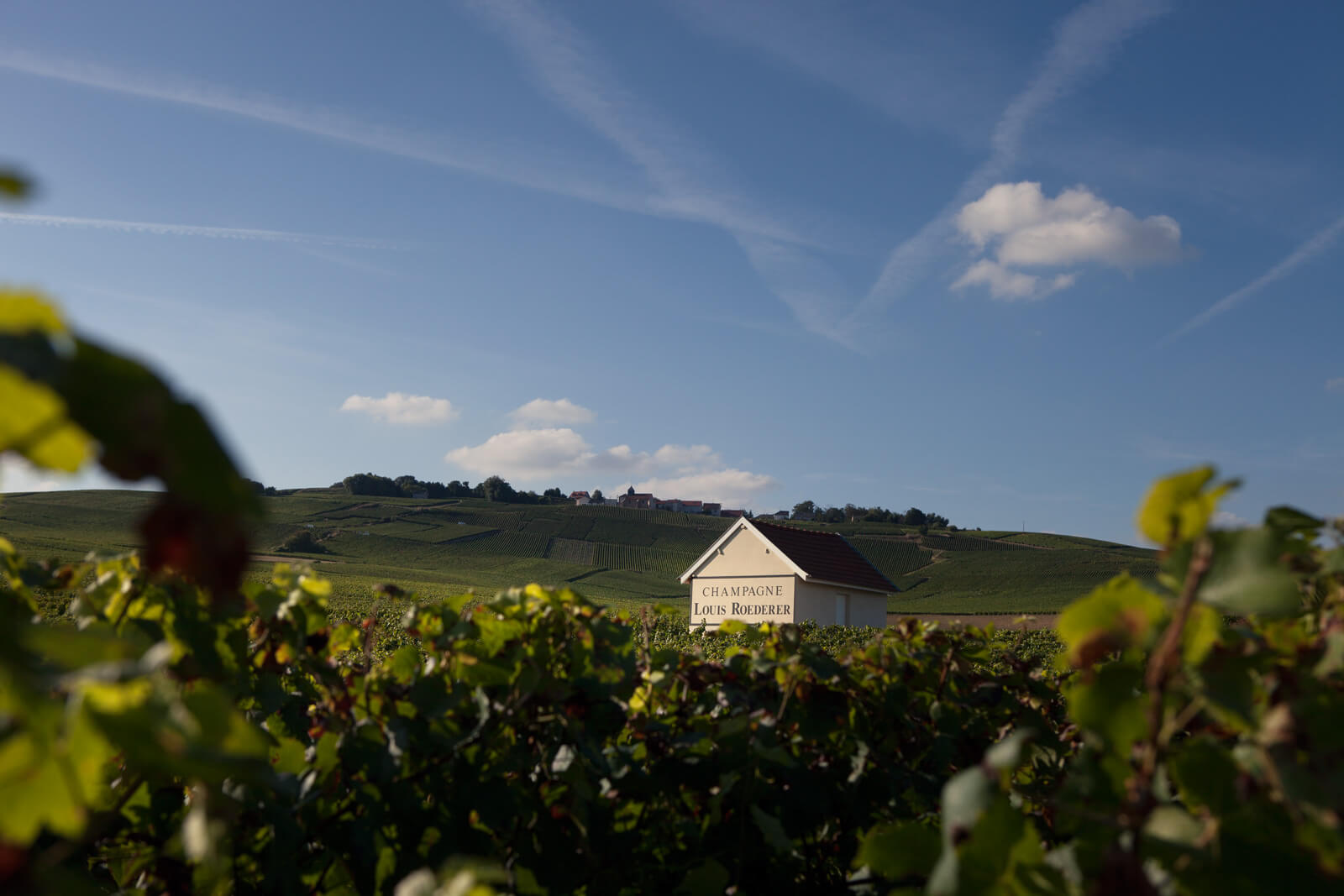
Louis Roederer vineyards in Champagne
Louis Roederer has an incredibly high percentage of its own vineyards, allowing the winemaker to avoid the necessity of relying on growers. Louis Roederer can look after those vineyards as it deems fit, and the move to organic and biodynamic viticulture has been well documented.
These forms of farming have provided them with lower pHs, more dry extract, and a 20 percent reduction in yields. Lécaillon believes that this wine is even more “Roederer” than the Brut Premier as it stresses finesse and purity of fruit (he is hardly going to say it is less Roederer, though). He has also moved his position to a search for “freshness” rather than for “ripeness.”
The inspiration for the change reflects very much the experience that the brothers at Jacquesson had: when you hit a great vintage, it can mean having to dumb down the wine to make something lesser than one might otherwise. And that, for a winemaker, must be soul destroying. For Lécaillon, it was the stellar 2002 vintage and realizing that the Brut Premier of that time could have been even better.
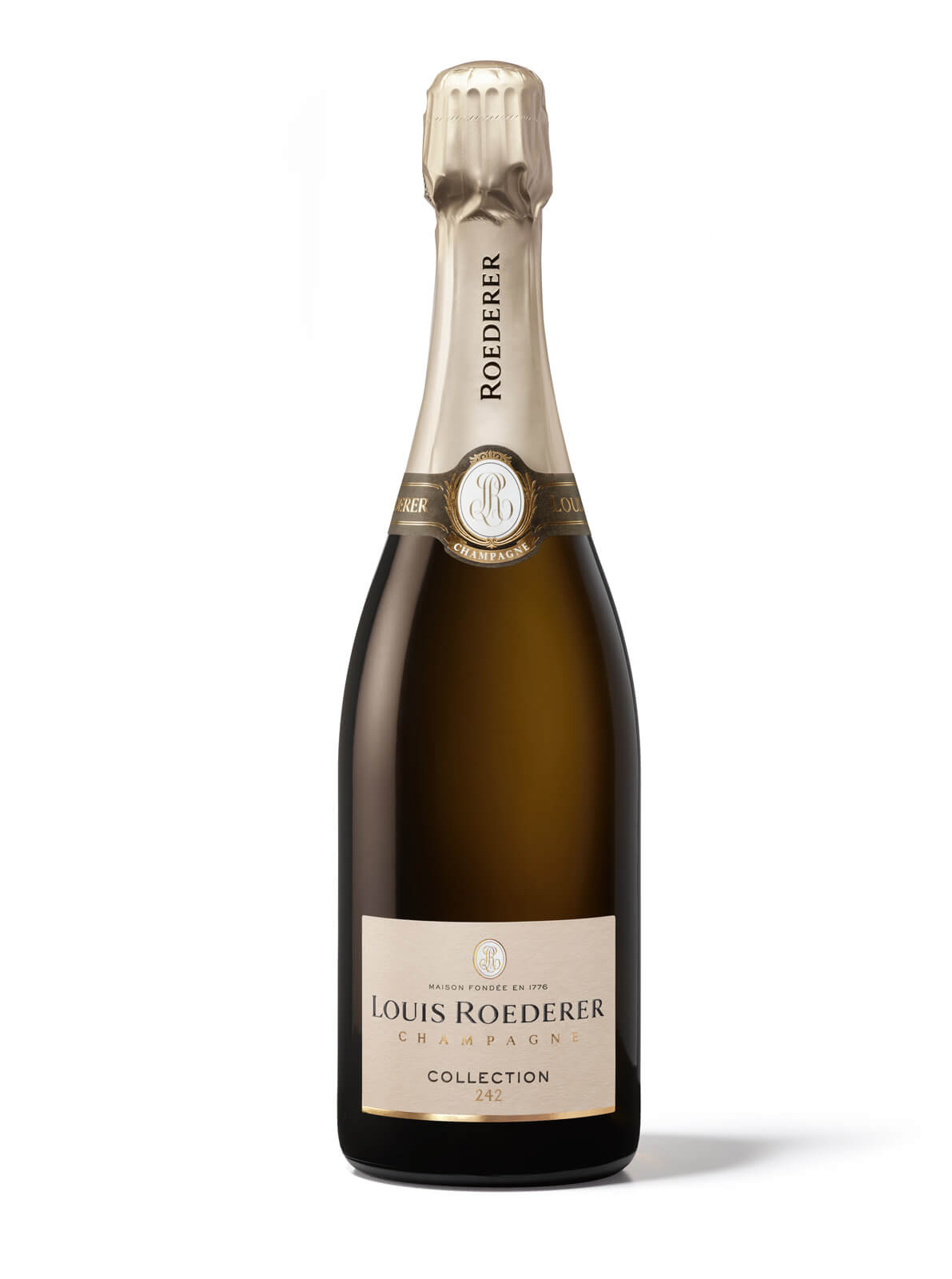
Louis Roederer Collection 242
Louis Roederer Collection 242 tasting notes
This new Roederer is a joy to drink, immaculately balanced and delightfully fresh. The nose has a curious character that I could only think to describe as “comforting.” With it, stone fruit, nuts, and a minerally backing.
Touches of peaches and cream make for such an appealingly seductive texture. Bright acidity, reminiscent of the wet stones from a mountain stream, freshly thawed. The acidity is nicely rounded, giving the rather strange impression of being both rounded and piercing.
Wonderfully long finish and a champagne that is complex throughout. There was a hint of orange rind on the palate with some marzipan. But the length, the balance, the freshness, and the complexity all combine to make this a thrilling new release. 95.
You may also enjoy:
Louis Roederer Cristal 2013 And Cristal Rosé 2012: As Good As Champagne Gets
Champagne Louis Roederer Cristal 2012: Biodynamic Viticulture At Its Very Best
Louis Roederer Cristal 2008: Supreme Elegance And Ethereal Grace
Louis Roederer Rosé 2012: A Gloriously Ethereal And Elegant Champagne
Leave a Reply
Want to join the discussion?Feel free to contribute!








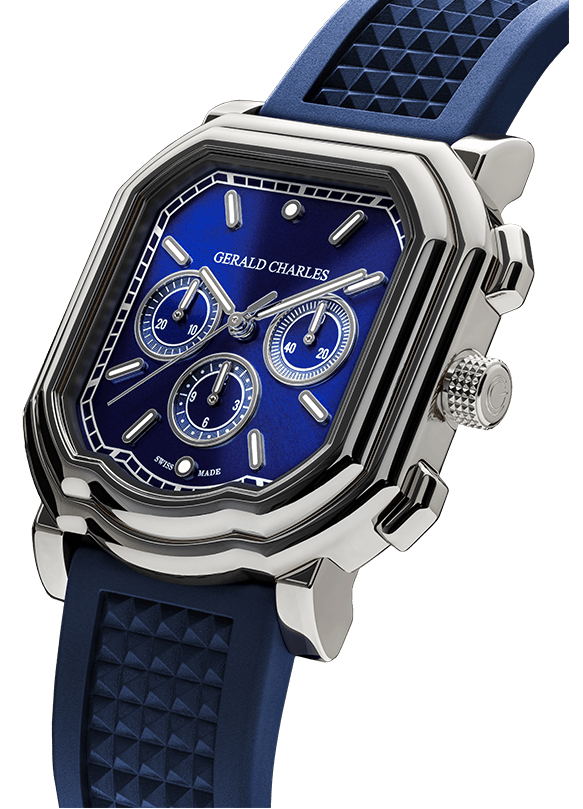


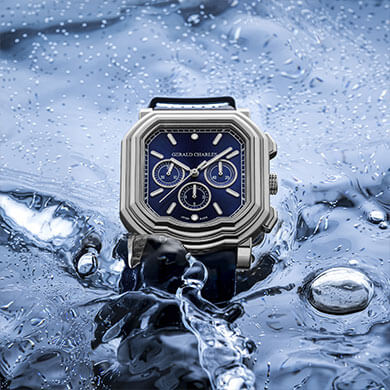

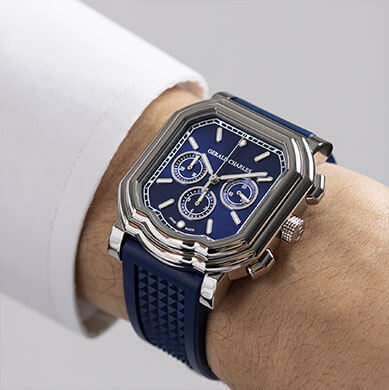



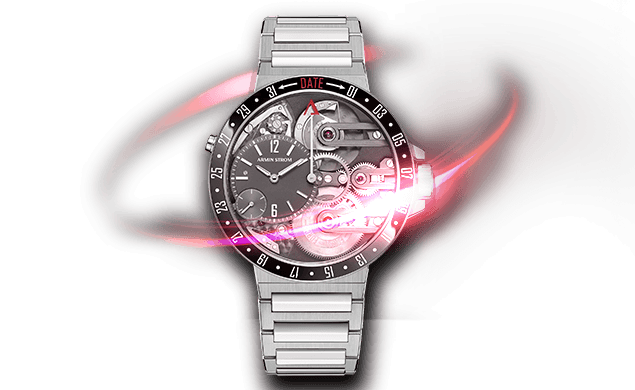
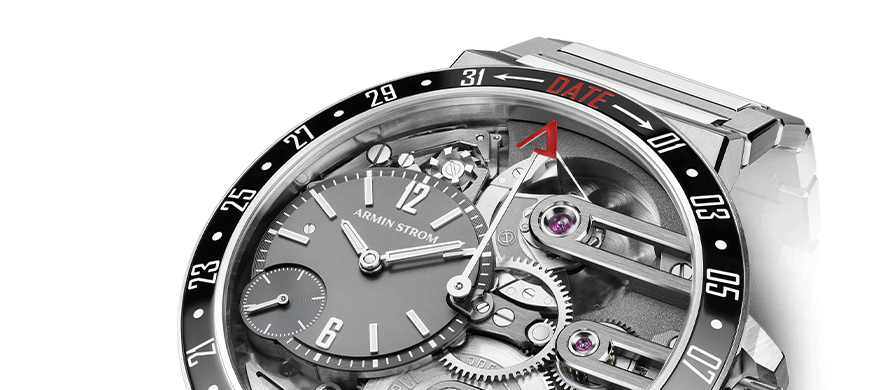
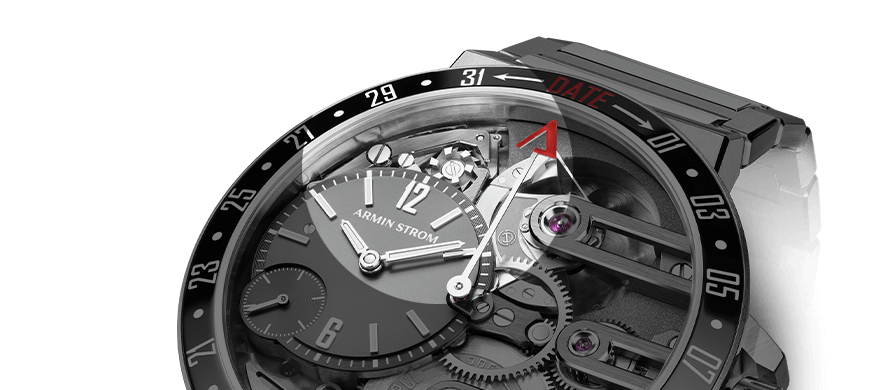


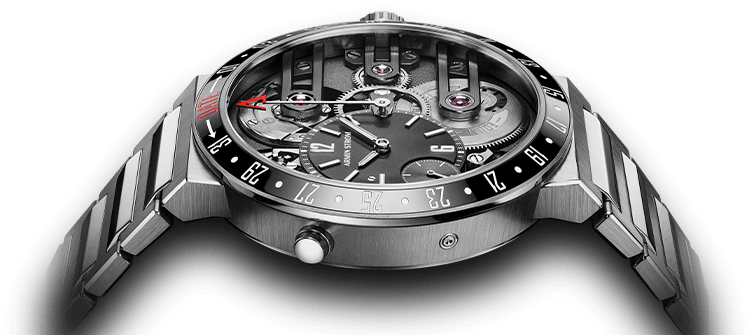


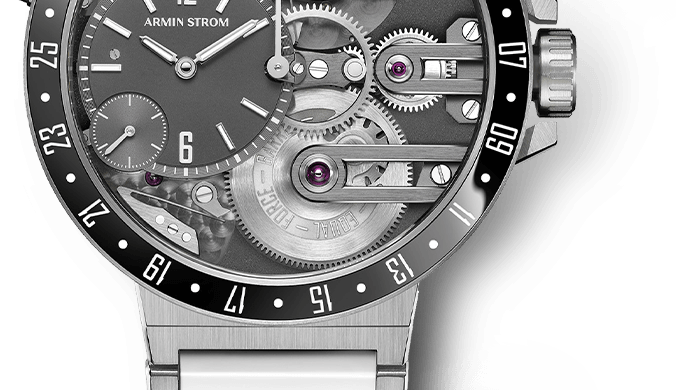



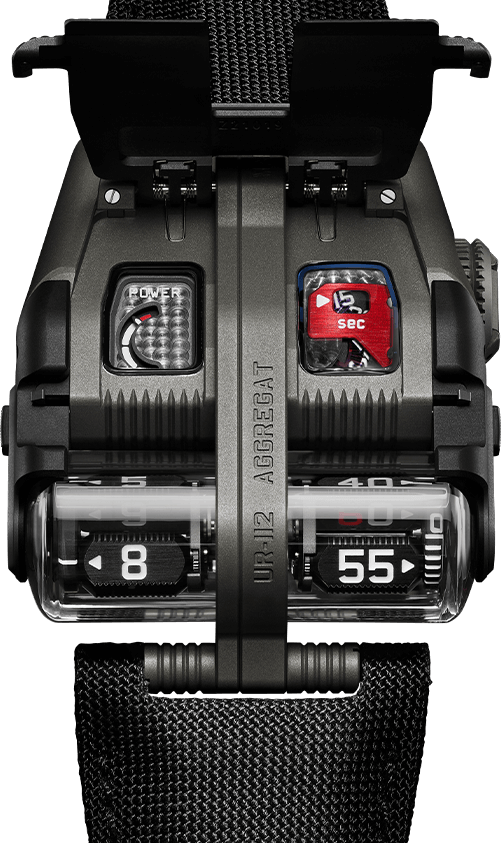

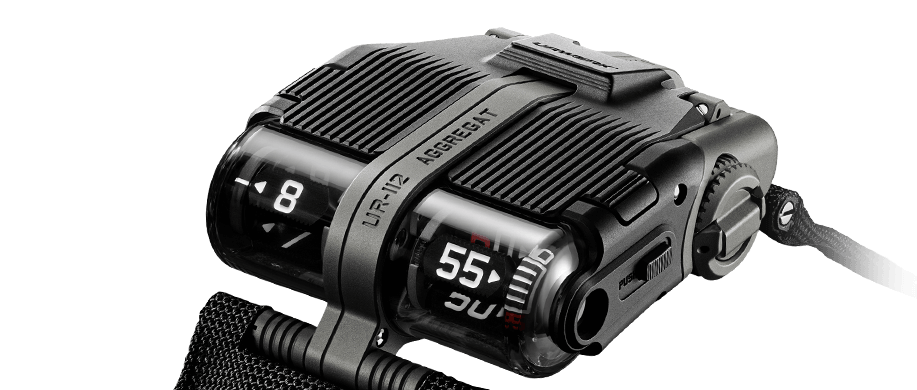

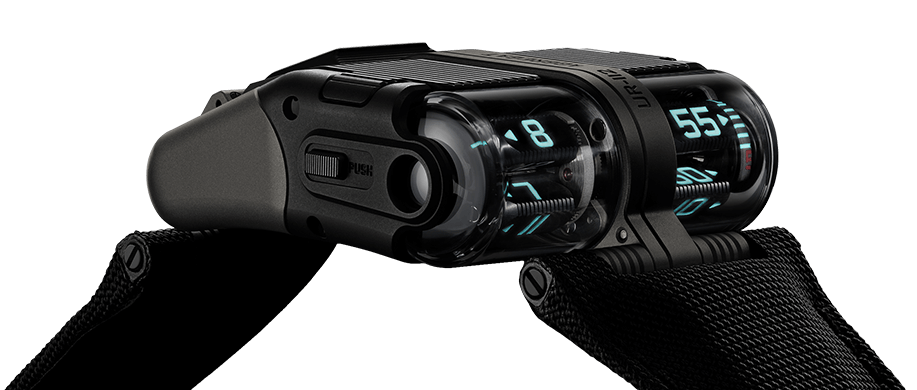

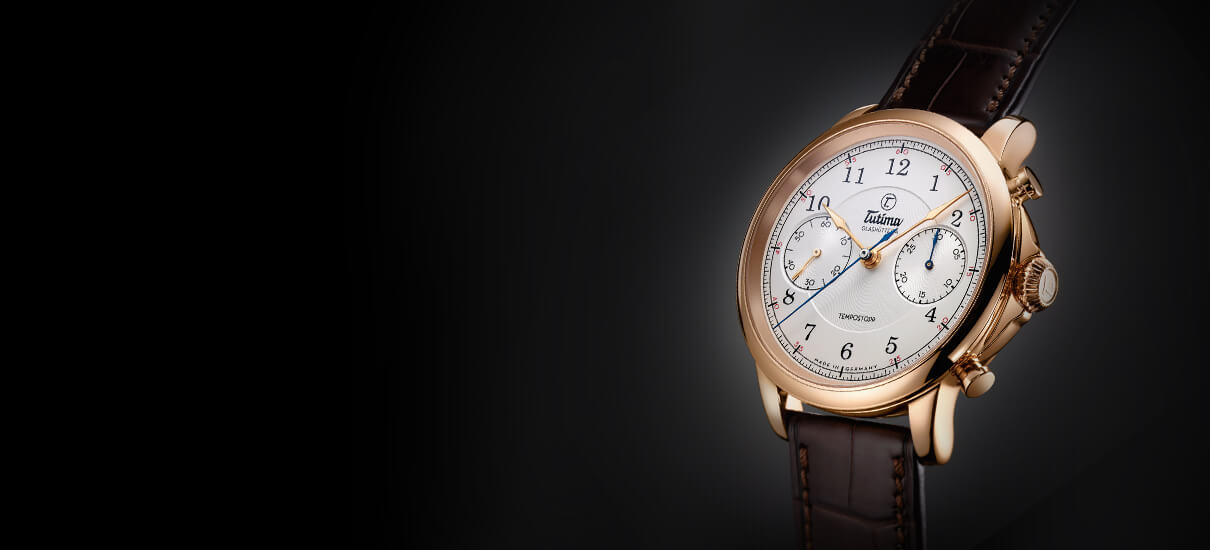

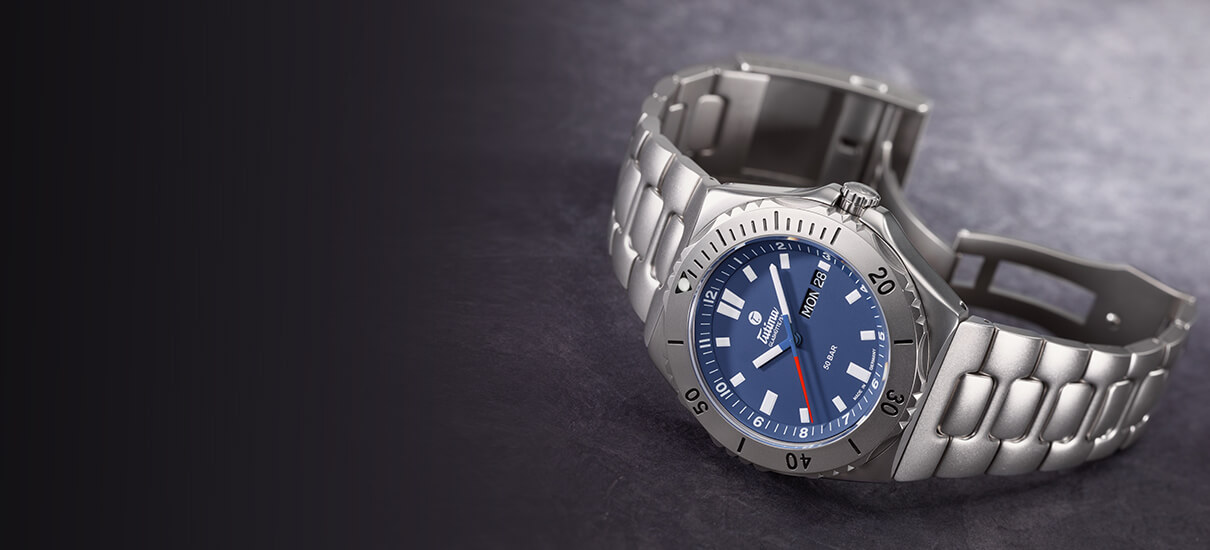

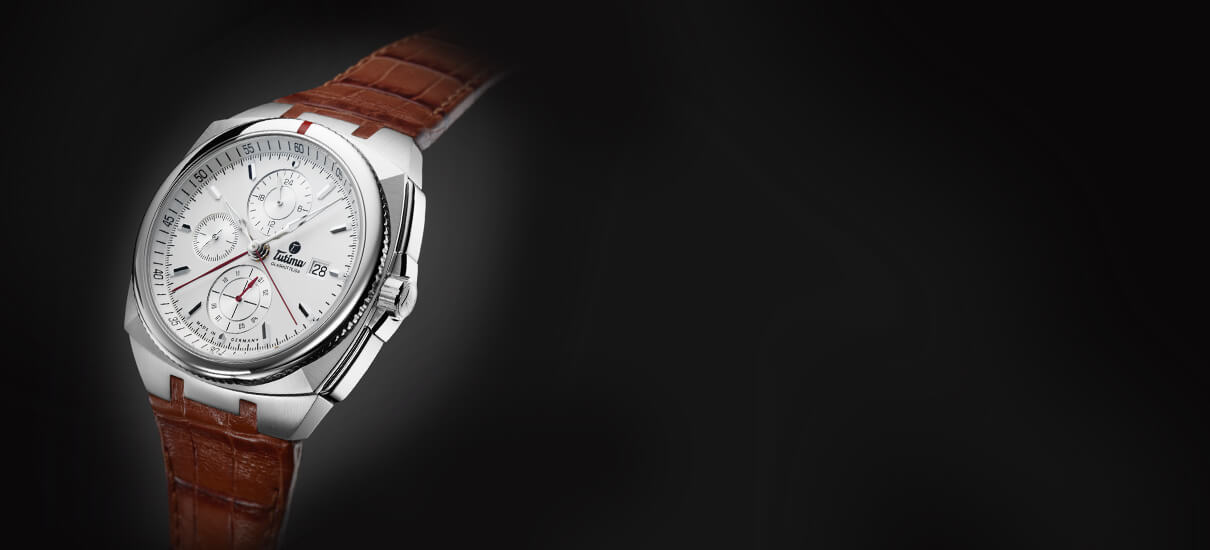

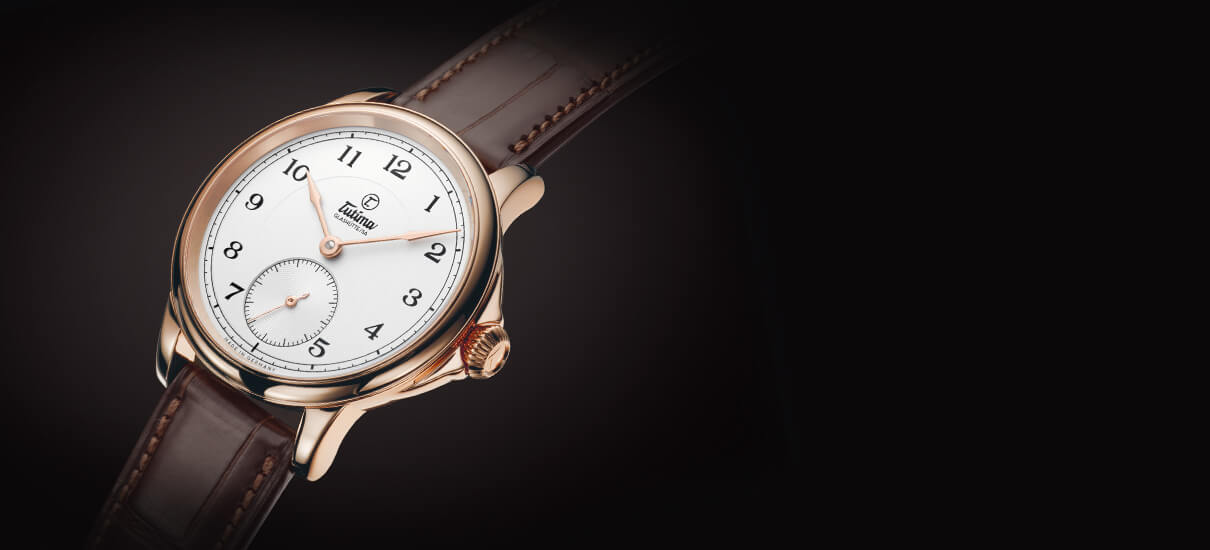

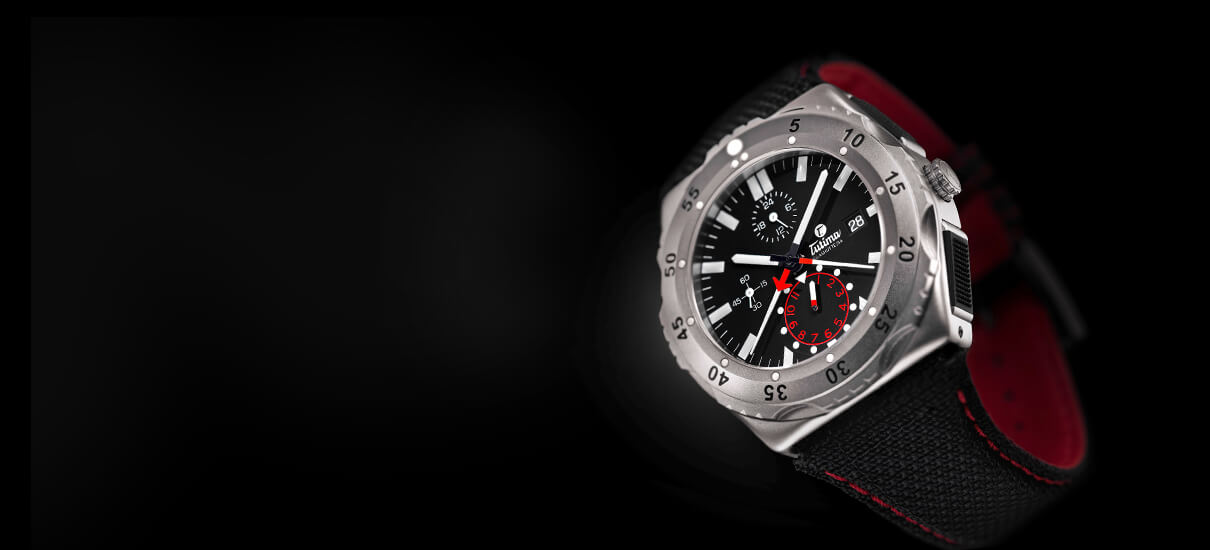



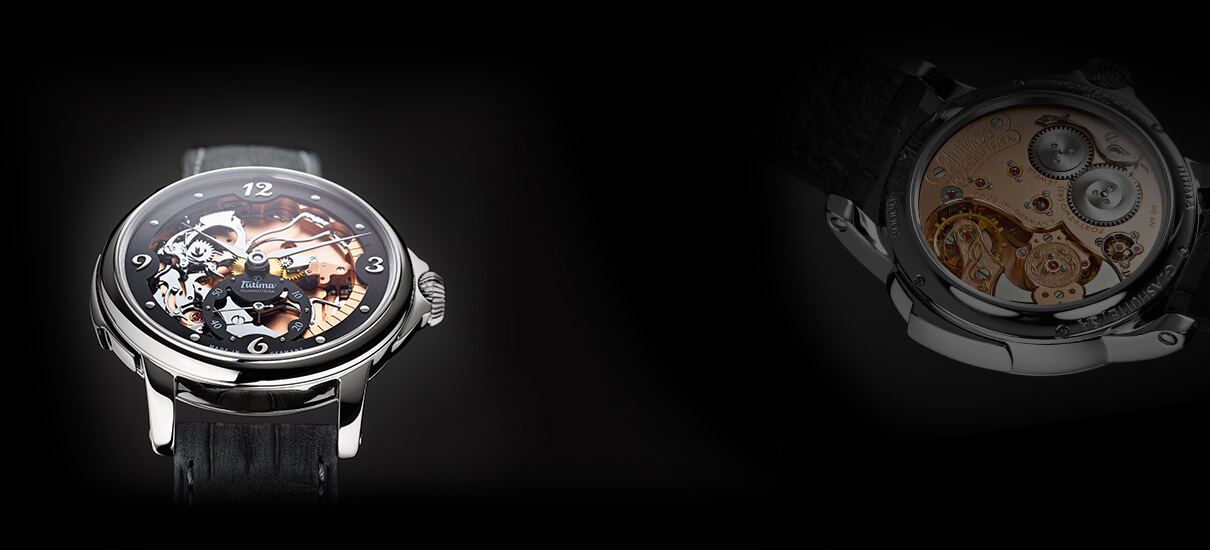

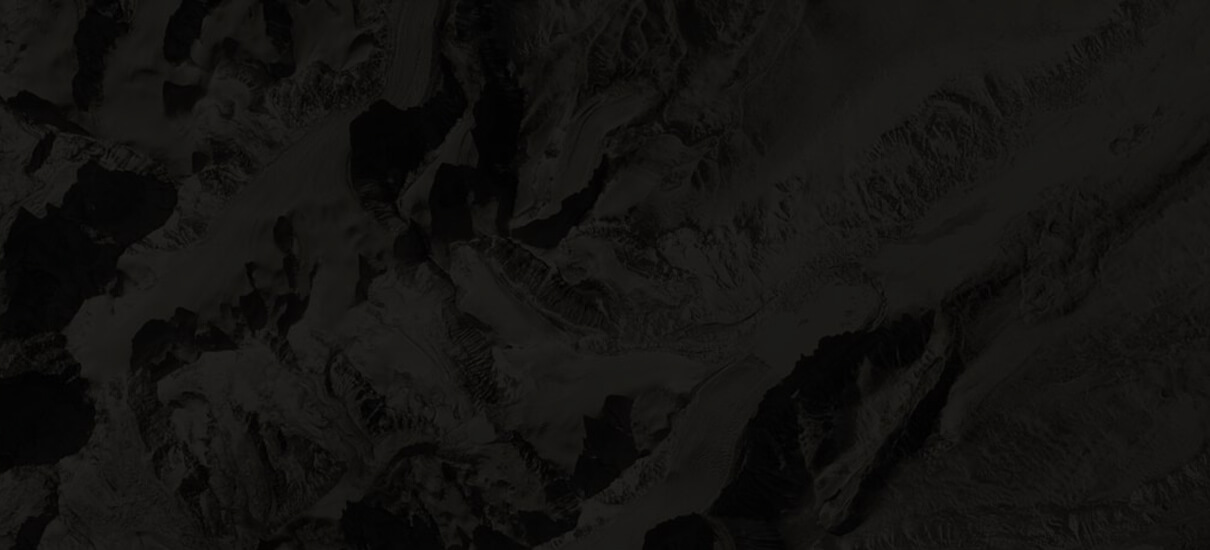

The people from Roederer have very kindly sent me a small correction. Where i referred to a ‘huge’ tank, I am advised that it is not one single huge tank but rather a number of large tanks. The smallest is 320 hl, the biggest is 2,300 hl, and the average is 1,000 hl.